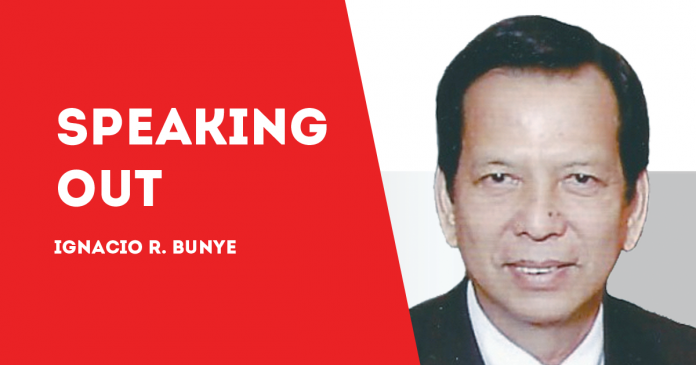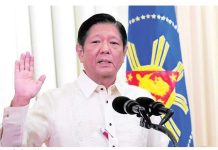
IT’S OFFICIAL. By January 2, 2021, the strategic union of Bank of the Philippine Islands (BPI) and BPI Family Savings Bank (BFSB) will be in effect.
Officials of the two entities are unanimous in saying that “this merger has the best interest of our customers and employees. Our shareholders will also benefit. This merger is timed to provide us with the platform to help lead the economic recovery that is sure to come.”
Ms. Maria Cristina “Ginbee” Go, president of BFSB, shared her thoughts on the merger.
“As 2021 comes to a close, BPI Family Savings Bank (BFSB) rounds up its 36-year history of leadership in the thrift bank industry stronger than ever, more than ready to capture the opportunities offered by a more digital world.
“BFSB emerges from the pandemic exceeding expectations as Housing and Auto Loan portfolios registered better than industry growth in outstanding loans and asset quality.
“The merger with parent bank, BPI, will reinforce the BPI Group’s Consumer Bank business as it forges on its digital transformation journey.
“Under OneBPI, the bank pursues its vision of offering clients superior customer experience through the combined power of the BPI Group’s extensive physical network and leading digital capabilities.”
On July 1, 1985, the then Central Bank of the Philippines authorized BPI Family Savings Bank (BFSB) to operate as a thrift bank, following the acquisition by BPI of Family Bank and Trust Company, then the largest and most profitable consumer finance company. BFSB has since become the largest thrift bank in the country in terms of assets, deposits and loans.
Remembering our gallant WWII fighter pilots
Exactly 80 years ago (Dec. 7, 1941), the Imperial Japanese Navy Air Service, attacked Pearl Harbor in Hawaii, destroying 8 battle ships, 188 aircraft, killing 2,403 and wounding 1,178 Americans.
In coordinated attacks, approximately eight hours after Pearl Harbor, Japanese planes also bombed American facilities in the Philippines, Guam and Wake Island as well as British facilities in Malaya, Singapore and Hong Kong.
Japan declared war on the US and the British Empire later that day but the formal notice was not delivered until the following day.
Just like in Pearl Harbor, the first day of the Japanese attack in the Philippines caught American and Filipino troops in Clark and Iba by surprise. The attackers managed to destroy one half of the Philippine Army Air Corps on the ground. Casualties during the initial attack totalled 80 killed and 150 wounded.
Over the next few days, the Japanese bombed various military bases: Nichols Field, Camp Stotsenberg, Camp John Hay in Baguio, Zablan Field in Camp Murphy, Fort McKinley (now Fort Bonifacio), and the US Navy Yard in Cavite.
In the following days, Philippine Army Air Corps fighter pilots engaged the Japanese in two major dog fights. Captain Jesus Villamor led the defenders over Zablan Field (present day Fort Aguinaldo) on December 10, with Lieutenants Godofredo Juliano, Geronimo Aclan, Alberto Aranzaso, and Jose Gozar; and another on December 12 over Batangas with Lieutenants Juliano, Aclan, Cesar Basa, Manuel Conde, and Antonio Mondigo.
Despite their numerical disadvantage, the Filipinos downed 6 Japanese planes, two of which were shot down by Villamor himself. Now you know, after whom Villamor Air Base is named.
During the Dec 12 encounter, Lt. Cesar Basa was returning to base from an earlier separate mission. With his gas tank half empty, Basa decided to join his comrades in fending off the Japanese. Unfortunately, his plane was shot full of holes. Basa managed to land his plane safely, but was killed by a low-flying Japanese plane which strafed his grounded aircraft. Basa became the first Filipino fighter-pilot casualty of WWII. In recognition of his heroism, Lt. Basa was posthumously awarded the Silver Star. An air field in Floridablanca, Pampanga has also been renamed in his honor.
Capt. Villamor and Lt. Gozar were personally awarded by Gen. Douglas MacArthur the Distinguished Service Cross for their valorous defense of the airspace over Luzon. Lt. Gozar’s wingmate, Lt. Godofredo Juliano, on the other hand received the Gold Cross.
The massive destruction of PAAC air fields eventually led to their deliberate dismantling. The PAAC was ordered to destroy its remaining planes and join the movement of troops to Bataan.
Villamor continued his war against the Japanese as an intelligence officer. Having escaped the fall of Bataan, Villamor received orders to return to the Philippines. Promoted to major, Villamor served as a commander in the Allied Intelligence Bureau. Years later, President Ramon Magsaysay conferred on Villamor the Medal of Valor for his war-time exploits.
Flashback UAAP Season 80
There were many memorable moments in the UAAP Season 80 (2017-18) men’s basketball championship but for me, one of the most unforgettable occurred outside the court.
Immediately, after the final buzzer which saw the Ateneo Blue Eagles snatch that year’s crown from the defending champion, The La Salle Green Archers, the De La Salle building along Taft Avenue was bathed in bright blue lights, Ateneo’s colors. And it stayed so overnight. For a while, passersby thought there must have been a mistake.
But no, it was really intended by the De La Salle Green Archers as an accolade to a very worthy opponent. What a magnificent gesture of sportsmanship! Sana ganito rin ang ating pulitika.
***
Note: You may wish to share the foregoing via Facebook, Twitter or Viber./PN





